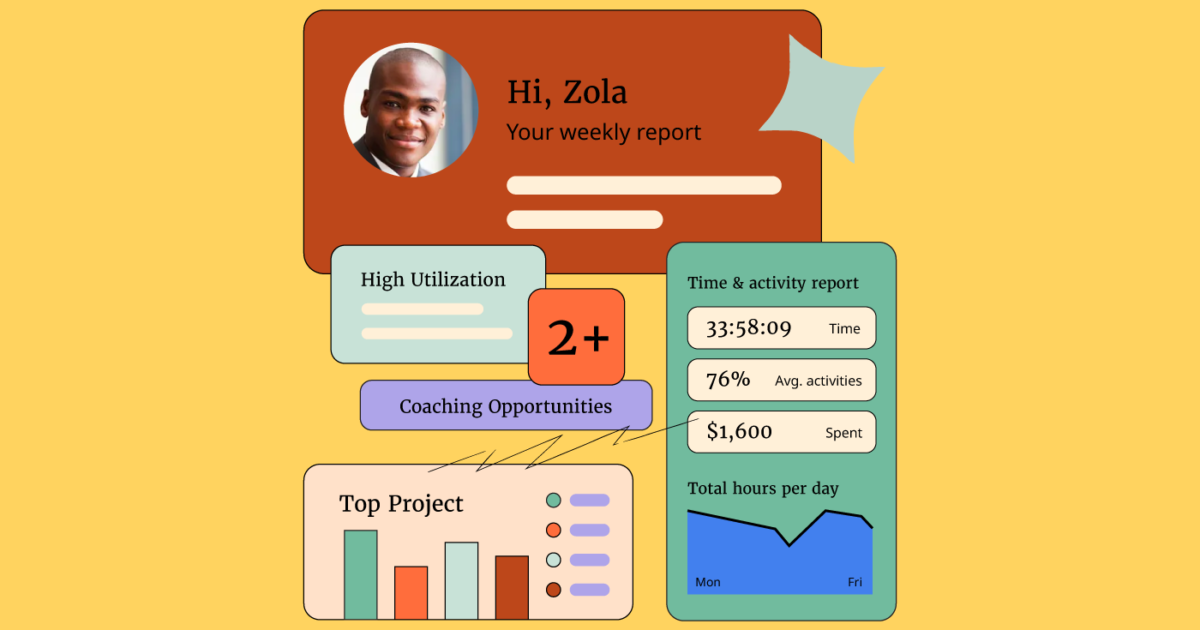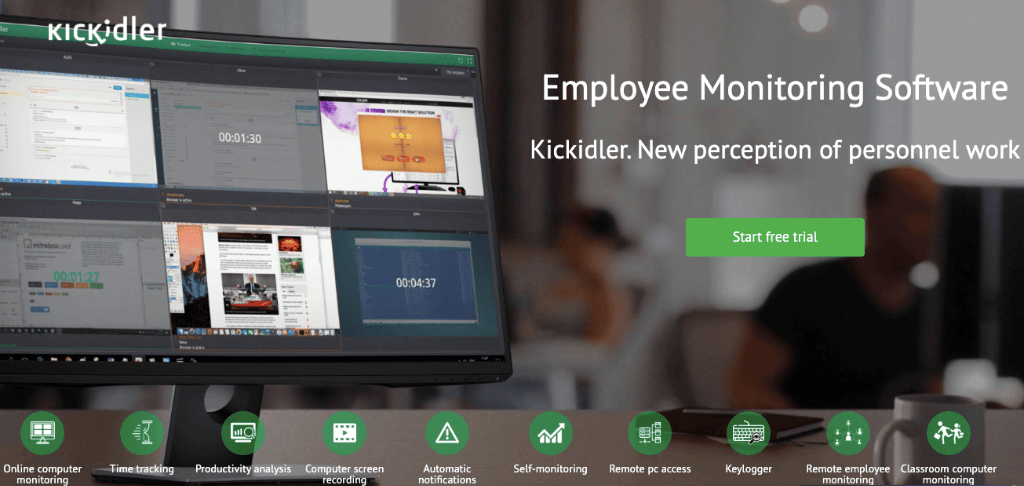Software used to monitor and track the actions of employees is referred to as employee monitoring software. Employers can gather information on different aspects of the behavior of employees, such as internet usage and application usage, keystrokes as well as screen shots. The software for monitoring employees has the primary goal of increasing employee productivity, ensure that policies of the company are adhered to and protect confidential information and resolve any security concerns. When choosing a software for monitoring employees, you should consider several factors. These are the main things to remember to consider: Features- Choose which features your business requires according to your needs. Common features include website blocking, keystroke logs, application use tracking, and monitoring of emails. Prioritize features that are aligned with your monitoring goals.
Compliance and Privacy. Check that your software complies with all applicable moral and legal guidelines. Make sure you are familiar with all applicable laws and laws, such as the privacy laws and regulations. Software that protects the privacy of employees should have transparent and configurable settings.
User-Friendliness- Consider the software's ease of use and accessibility. A user-friendly interface as well as a simple setup process will save time and ease of implementation. Look for dashboards that are customizable and reporting tools which allow you to effortlessly interpret the data that is collected.
Integrity and Compatibility- Ensure that the software integrates smoothly with your existing IT infrastructure as well as the other platforms you are using, such as operating systems and email clients, as well as project management tools, and collaboration platforms. Compatibility is crucial to ensure uninterrupted monitoring, and without affecting your daily routine.
Data Security- Examine the software's security features to ensure the security of data. It is essential to use encryption, secure data storage and access controls. Check that the provider of software has a solid security record and robust data protection practices.
Scalability - Consider the software's ability to grow in line with your business. If you are planning to increase your team or open new locations in the near future Choose a solution which is easily expanded to meet the changing requirements.
Analytical Reporting- Check the software's report and analytics capabilities. Features that provide a comprehensive view into employee productivity, time management, and trends are important to look for. Customized reports and analytics can assist you in making educated decisions and determine areas for improvement.
Customer Support: Evaluate the quality of customer service offered by the software vendor. Check their availability and technical support. Support for customers is essential for ensuring prompt resolution of problems.
Cost- Consider the pricing structure of the program, whether it's a one-time fee, subscription-based, or usage-based. Know the price, and whether there are any extra costs for upgrades, support, or additional features. Your budget should be balanced as well as the worth of features with what you can afford.
Transparency and Communication With Employees Keep clear communication and transparency when working with employees in relation to monitoring software. In detail, explain the goal the scope and expectation of the monitoring. Discuss any concerns they may have, and assure them of the respect for their privacy.
These elements will help you make an informed decision about the employee monitoring software to choose. Have a look at the top rated time tracking monitoring services for website examples.

What Are The Features Of Employee Monitoring Software And What Are The Differences Between Them?
Employee monitoring software includes many features designed to track and analyse employee activities. Certain features are standard to every employee monitoring software. This feature gives a summary of employee time spent at work.
Keystroke Logging Keystroke Logging Keystroke recording records each keystroke employees type. It helps identify productivity bottlenecks, detect illegal activities, and collect evidence for investigations should they be required.
Screenshots and screen recording- Some software record employee screen screens in real time, or captures screenshots on a regular basis. This feature may be helpful in monitoring productivity or troubleshooting.
Internet Usage Tracking- This feature tracks employees' online activities, such as the websites they visit, searches, and downloads. It is used to detect excessive browsing that is not related to work, security threats, or policy infractions.
Application Usage Tracking: This feature is used to track which apps employees utilize during work hours. It offers an overview of the most frequently utilized applications, and also identifies any excessive or inappropriate use that is not approved.
Email Monitoring- Email monitoring lets employers monitor employees' emails, which include sent and received messages, attachments, and the content of emails. It helps employers ensure compliance with policies to prevent data leaks, and investigate suspicious activity.
Tracking of documents and files - This feature tracks changes to files, transfers, and changes to files. It can help protect sensitive information, monitor document collaborative work, and ensure compliance to data security policies.
Remote Monitoring permits employers to supervise employees who work remotely or at different locations. Employers can monitor the work of their employees and guarantee their productivity, regardless of the place they're located.
Productivity Analysis - Software for monitoring employees often includes productivity analysis tools which offer insight into the allocation of time and work patterns. These analyses help optimize workflow and identify areas for improvement.
Analysis and Reporting- Robust analytics and reporting features produce detailed reports and visualisations using the data collected. These reports offer valuable insight about employee performance and the resource allocation.
Compliance and Policy Management: Some software solutions have features that guarantee compliance with both company policies and regulations. Employers are able to establish and enforce rules pertaining to acceptable computer use, internet access, and security of data.
Alerts and Notifications: Alerts and notifications alert employees and managers of certain events and activities. They could alert them to excessive internet use or attempts to access restricted sites or suspicious behaviour.
These features are included in a variety of software options for monitoring employees. When selecting software, think about the features that are compatible with your monitoring goals and comply with the ethical and legal standards within your area of operation. Check out the top employee monitoring company for blog advice.

How Does Employee Monitoring Software Conform To The Compliance And Privacy Law?
Respecting privacy and compliance laws is an important aspect of employee monitoring software. Here are a few methods that employee monitoring software adheres to privacy and compliance regulations regardless of the fact that the legal requirements vary between different jurisdictions. Consent and notification- A majority of jurisdictions require informed consent by employees and demand that they be informed about monitoring activities in advance. Monitoring software for employees typically includes options that permit employers to clearly communicate their monitoring policies to employees. This could involve giving written notices, seeking consent on consent forms, or preparing an employee handbook which outlines the monitoring procedures.
Transparent Monitoring Policies: Employee monitoring software encourages transparency by ensuring employees know the specific types of data being collected, the purposes of monitoring, and the nature of monitoring. Employees are able to better understand their privacy rights and the limits of monitoring if policies are clear and comprehensive.
Data minimization - In order to comply with privacy laws and employ monitoring software, a process of minimization is frequently utilized. The software collects and retains only the necessary data, while avoiding irrelevant or excessive information. This software reduces privacy risks by only collecting the data needed for monitoring.
Anonymization or Aggregation - Some software for employee monitoring collects and anonymizes information to safeguard employees' privacy. The process of anonymization eliminates personally identifiable information from information. This makes it hard to connect data with a particular individual. Aggregation is the process of combining data from many employees to provide insights at a group level without singling out individuals.
Secure data storage and encryption - The protection of data is an important concern for employee monitoring software. The software uses methods for secure storage of data and encryption to safeguard data against unauthorised access, breach, or accidentally disclosed data. This includes protecting data in transit and at rest.
Access Controls and Restricted Privileges to ensure compliance, employee monitoring software typically provides access control and privileges that are more granular. Employers can restrict access to the monitoring information to those who need it for legitimate reasons like HR employees and administrators designated by the company.
Rights and Remedies for Employees Rights & Remedies: The protection of the rights of employees is crucial for ensuring that they are in compliance with privacy laws and compliance regulations. Software that monitors employees typically includes features that allow employees to access their monitoring information and request corrections and file complaints. This allows employees to make use of their rights and to pursue remedies in the event of privacy violations.
Conformity with Data Protection Regulations – Employee monitoring software is designed compliance with the relevant data privacy regulations, including the General Data Protection Regulations (GDPR) in the European Union, or the California Consumer Privacy Acts (CCPA) in the United States. The way to achieve compliance is by taking suitable measures to protect personal data, respecting rights of the data subject, as well as making sure the data used is lawful. data.
Apart from using employee monitoring tools businesses should also seek out legal experts and stay current regarding the latest laws and regulations in their respective jurisdictions. Adhering to compliance and privacy laws requires a holistic approach that goes beyond the software itself, which includes clearly defined policies, training for employees, and ongoing compliance monitoring. Read the top employee monitoring company for website advice.
